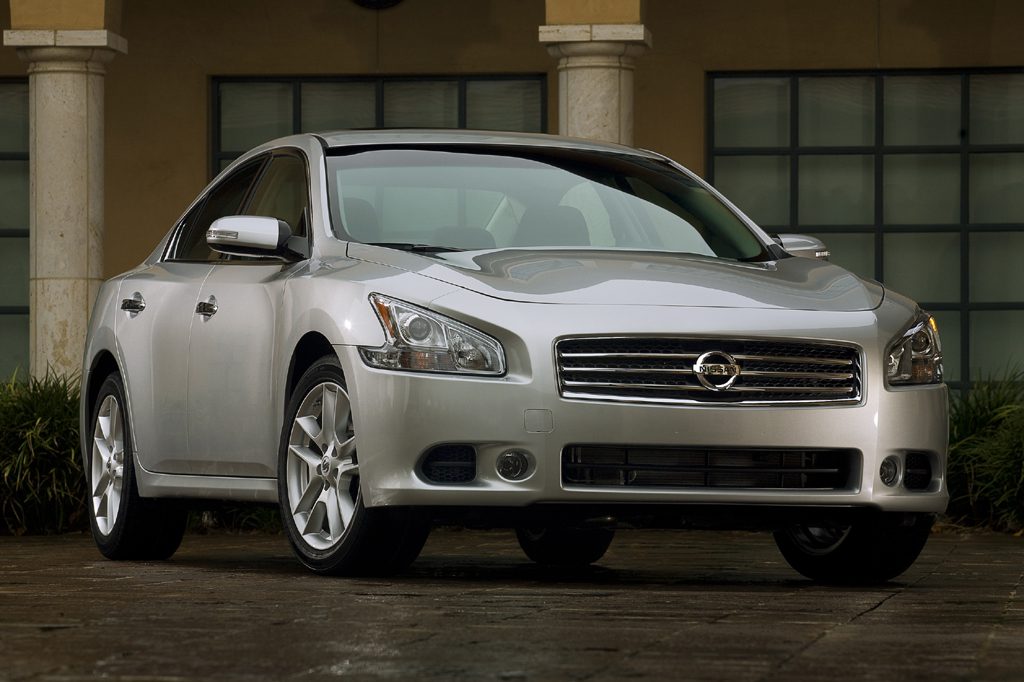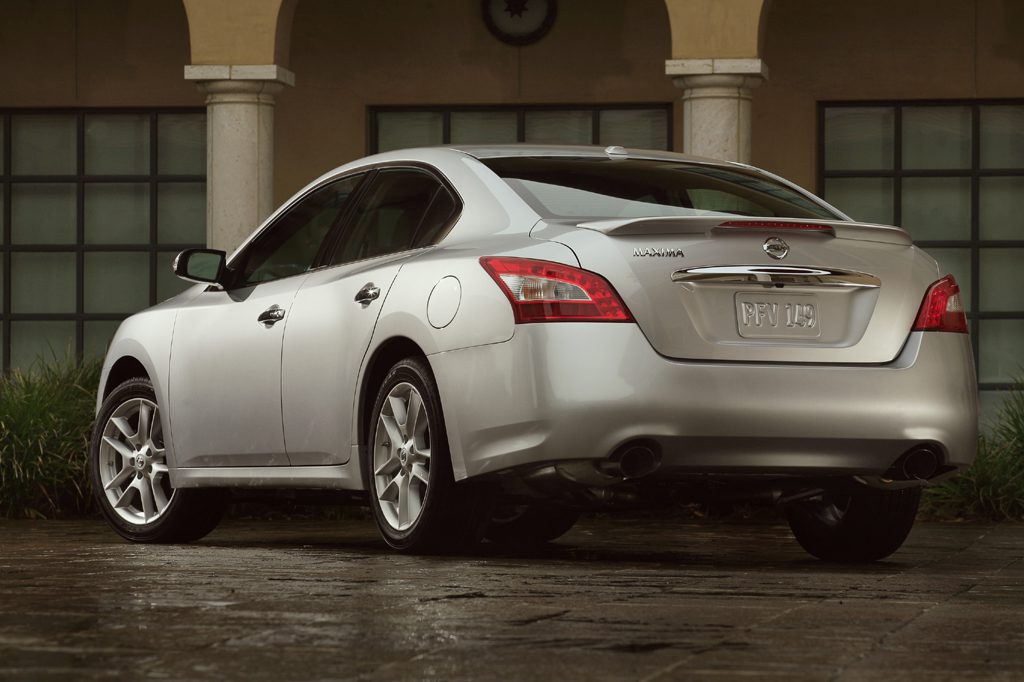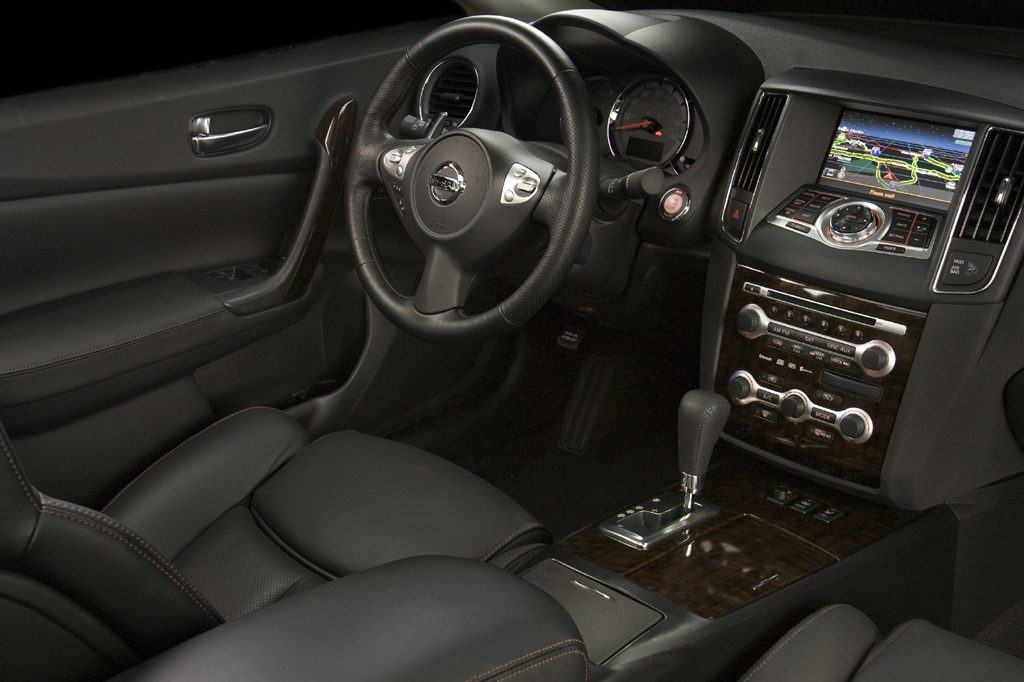| Midsize car; Built in USA |
|
|
| Good condition price range: $9,900 – $29,200* |

2009 Nissan Maxima Front

2009 Nissan Maxima Rear

2009 Nissan Maxima Interior

2009 Nissan Maxima Profile
| Pros: |
|
| Cons: |
|
Maxima fills a space between the more sedate Altima and the sportier, premium-level G37 from Nissan’s Infiniti division. Although Maxima fails to strike an ideal ride and handling balance, it offers abundant power and plenty of front passenger space. There’s also the bonus of some unexpected available features, such as a heated steering wheel. While Nissan targets Maxima as a “4-door sports car,” it’s not quite athletic enough to live up to that title. Strong resale values tend to keep prices rather high on secondhand Maximas.
Overview
Redesigned for the 2009 model year, Nissan’s midsize front-wheel-drive sedan gained fresh styling and additional power. Two trim levels were available: 3.5 S and 3.5 SV. The 3.5 SV sedan could further be equipped with a Sport or Premium package that featured upgraded equipment such as 19-inch wheels, woodgrain or faux carbon fiber interior trim, heated leather seats and steering wheel, and power rear sunshades. All models were powered by a 290-horsepower 3.5-liter V6-an increase of 35 hp over 2008 Maximas. A continuously variable automatic (CVT) with a manual shift gate and optional paddle shifters was the only transmission.
Standard safety features included antilock brakes, traction control, an antiskid system, front side airbags, and curtain side airbags. Leather upholstery was standard on the SV model. Nissan’s dual-panel tinted moonroof also was available; a conventional sunroof was standard. Other optional equipment included satellite radio with real-time traffic information; a 9.3-gigabyte hard drive for storing digital music files; rear-seat climate and audio controls; a rearview camera; an iPod interface system; heated front seats; a cooled driver seat; and a wireless cell-phone link. Maxima rivals included the Chevrolet Malibu, Honda Accord, and Toyota Camry.
Yearly Updates
| 2010 Maxima Except for new wheel finishes and a standard Bluetooth hands-free phone system, no major changes were evident on the 2010 models. Nissan’s navigation system was upgraded to include DVD playback capability, streaming audio, and real-time traffic/weather information. The Premium Package for the SV sedan included a dual-panel moonroof, heated/cooled driver’s seat, rearview camera, and power sunshades. The Sport Package added 19-inch wheels, a sport-tuned suspension, faux-metallic interior trim, heated leather front seats, and a power tilt/telescopic steering column. Keyless access and a wireless cell-phone link were standard. |
| 2011 Maxima The 2011 Nissan Maxima, when equipped with the available Sport Package, gets slightly freshened styling. Otherwise, Nissan’s sporty midsize sedan sees no major changes. |
| 2012 Maxima The 2012 Nissan Maxima received only minor exterior styling and trim changes. |
| 2013 Maxima For 2013, Maxima saw no major changes, just a minor shuffling of standard-equipment and option-package content. |
| 2014 Maxima For 2014, a rearview camera, USB port, and 7-inch dashboard display screen became standard on the 3.5 SV model (they were optional previously). The base 3.5 S versions received a Value Package option that included xenon headlights with smoked glass, unique wheels, a rear spoiler, fog lights, and other exterior trim. |
